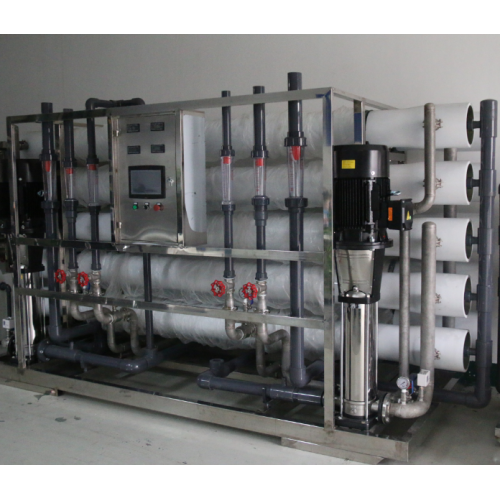
Ultrasonic Pure Water Treatment Equipment
- Min. Order:
- 1 Set/Sets
- Min. Order:
- 1 Set/Sets
- Transportation:
- Ocean, Land
- Port:
- shanghaigang
Your message must be between 20 to 2000 characters
Contact Now| Place of Origin: | China Jiangsu |
|---|---|
| Productivity: | 200 sets |
| Supply Ability: | Annual output of 200 sets of water treatment equipment or even more |
| Payment Type: | L/C,T/T |
| Incoterm: | FOB,CIF |
| Certificate: | AAA certification |
| Transportation: | Ocean,Land |
| Port: | shanghaigang |
Product Description
Large Ultrapure Water Equipment
1. Pure Water Equipment for ultrasonic cleaning adopts two-stage reverse osmosis method
The process for First-level Reverse Osmosis Pure Water Equipment is as follows: tap water → electric valve → multi-media filter → activated carbon filter → water softener → intermediate water tank → low pressure pump → precision filter → primary reverse osmosis → PH adjustment → mixer → secondary reverse osmosis (reverse osmosis) The membrane surface is positively charged) → pure water tank → pure water pump → microporous filter → water point. That's how Water treatment equipment or Industrial Ultrapure Water Equipment works.

2. Ultra-pure Water Equipment for ultrasonic cleaning adopts high-efficiency reverse osmosis plus EDI method:
The process is as follows: tap water → electric valve → multi-media filter → activated carbon filter → water softener → intermediate water tank → low pressure pump → PH value adjustment system → high efficiency mixer → precision filter → high efficiency reverse osmosis → intermediate water tank → EDI water pump →EDI system→microporous filter→water point

3. The characteristics and application fields of the ultrapure water preparation process: The ion exchange equipment is a traditional deionized water equipment. Its water quality is stable and the cost is relatively low. In the past, the boiler feed water of the power plant used a positive bed + negative bed + mixed bed treatment process.
In recent years, with the development of reverse osmosis, EDI and other processes, ion exchange equipment is complicated to operate, not easy to achieve automation, wastes acid and alkali, and has high operating costs. The shortcomings have become more prominent. At present, it is more used in the advanced treatment of reverse osmosis.
Small-scale ion exchange equipment often uses organic glass exchange columns, which is conducive to observing the operation of the resin. For example, whether the regeneration layering of the mixed ion exchanger is sufficient, whether the cation is "poisoned", etc., and resin loss.
Large-scale ion exchange equipment uses carbon steel lining epoxy resin or rubber lining, and a visual device is reserved in the middle to facilitate online observation of the water level of the regeneration liquid during ion regeneration.

Related Keywords








